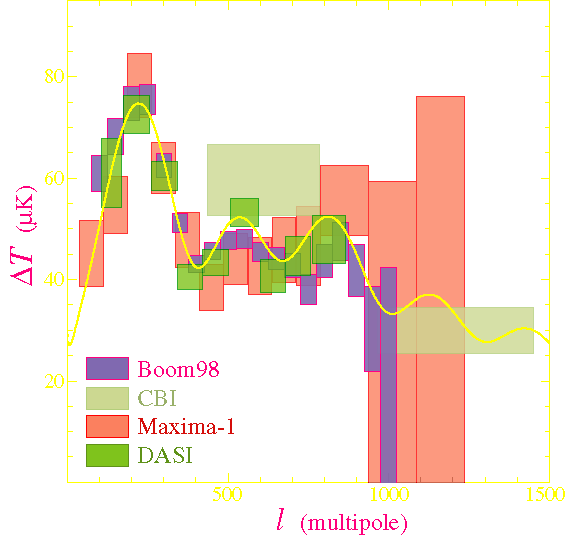
Although we cannot yet claim that the second peak is as precisely measured as the first, we can say that (assuming it exists!) it is definitely of lower amplitude than the first:

The current data indicate that the baryon density is around &Omegabh2=0.02 This value is interesting since it is also the baryon density inferred from the abundance of deuterium at high redshift in quasar absorption lines and the theory of big-bang nucleosynthesis. We now have an additional and independent line of evidence that there are missing baryons in the universe - i.e. that most the baryons are not in stars. Once the second and higher peaks are definitively measured, CMB constraints on the baryon density will sharpen considerably (ultimately to a few percent accuracy). Needless to say it will be interesting to see how these comparisons shape up as the data improve.